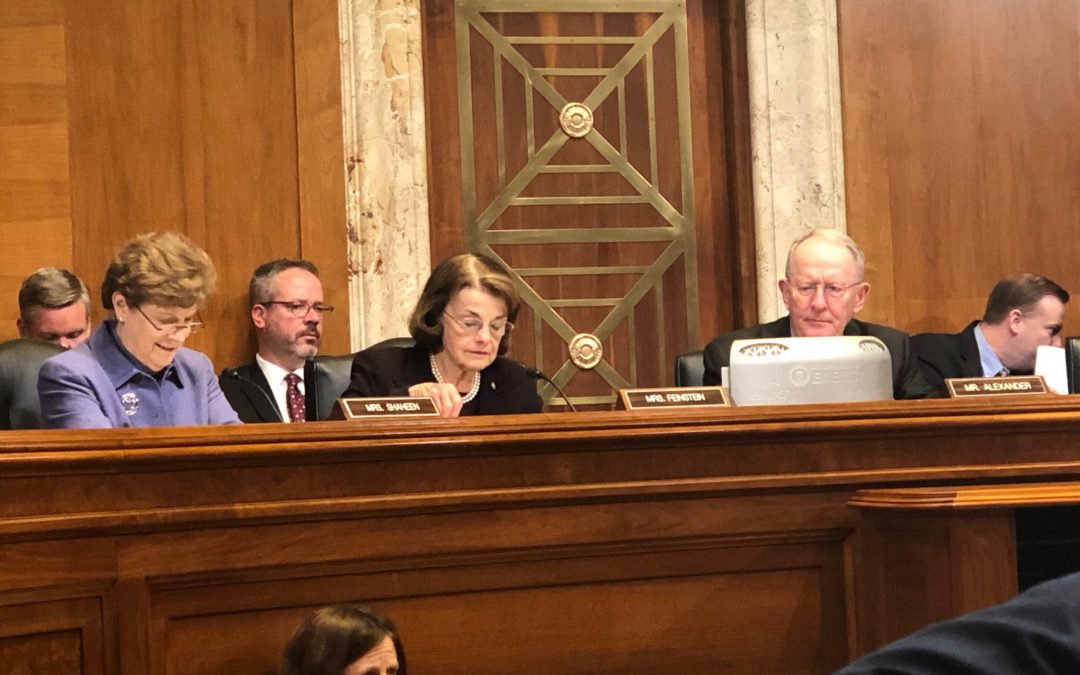WASHINGTON – The U.S. needs to modernize its aging nuclear energy system, the chairman of a Senate energy appropriations subcommittee said, and experts answered that 3-D printing is the answer to advanced, less expensive nuclear reactors.
Tennessee Sen. Lamar Alexander, chairman of the energy subcommittee of the Senate Appropriations Committee, lamented the cost of building nuclear reactors and said developing a sustainable nuclear solution is an urgent issue.
“The stakes are very high here,” Alexander said. “We have seen what happened in Japan,” he said, referring to the meltdown and ongoing clean-up of the Fukushima power plant after a 2011 earthquake.
California Sen. Dianne Feinstein, the subcommittee’s top Democrat, emphasized the importance of being able to safely dispose of nuclear waste, which is challenging because of a lack of disposal sites.
“I represent the ground where that waste is deposited and left for a millennium,” she said, adding that she didn’t want nuclear waste to endanger those in her state.
Edward McGinnis, principal deputy assistant secretary for the Office of Nuclear Energy at the Department of Energy, testified that advanced nuclear reactors are currently in development that could alleviate the concerns expressed by the senators.
Advanced reactors are safer, more flexible and easier to afford than the conventional nuclear reactors in use today, McGinnis said.
Another feature of the advanced reactors is that they are made with 3-D printing, meaning computers build the reactors layer by layer using composite material, which is less expensive than building a conventional reactor.
“Normal machine tools cannot build the new reactors,” said Dr. Thomas Zacharia, director of the Oak Ridge National Laboratory, explaining to the committee that a digital system can help reduce the cost of building a nuclear reactor by a factor of 10, savings necessary to remain competitive with the natural gas industry.
McGinnis said that a concept called the Transformational Challenge Reactor is being developed by the Department of Energy and Oak Ridge Laboratory to provide a roadmap for advanced reactor construction, which is still several years in the future.
Senators were especially focused on a 3-D printed prototype of part of a reactor. In a lighthearted moment, after poring over the object with Feinstein and New Hampshire Sen. Jeanne Shaheen, Alexander plopped it on the desk in front of him and asked the witnesses, “What is this?”
A more contentious exchange occurred between Sen. John Kennedy, R-La., and witness Dr. Christina Back, vice president of nuclear technologies at General Atomics.
Kennedy demanded Back provide him a specific dollar amount her company was seeking from the government to help build the reactor. When she hedged, Kennedy said, “I made a New Year’s resolution not to sit in a hearing where people are asking me for money unless they can explain why exactly they want it.”
Back attempted to do so, but Kennedy cut her off, saying he could not understand what she and her fellow witnesses were talking about.
“I’m not going to vote for a single, solitary dime until you send me something I can understand,” Kennedy said.
But the senators and witnesses underscored the need for a massive update to the United States’ nuclear energy system. Twelve of the country’s 98 nuclear reactors are slated to power down within six years while other countries continue to expand their nuclear technology.
“Nuclear power must be part of our energy future if we want a future … that can create good jobs and keep America competitive in a global economy,” Alexander said.


